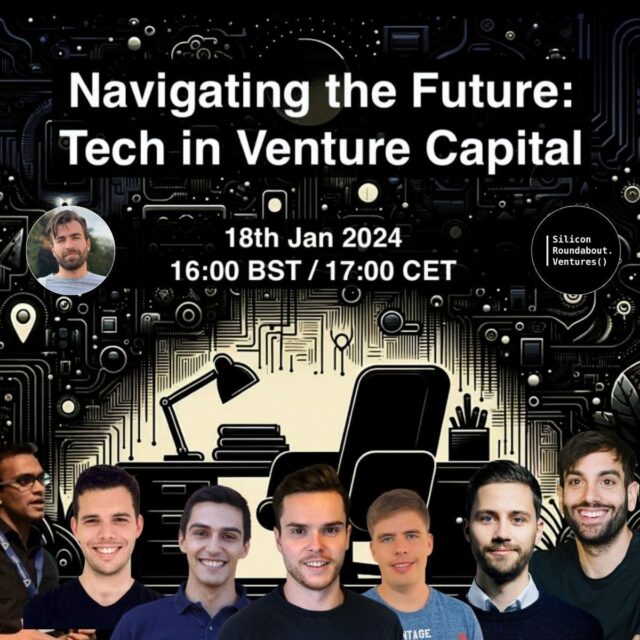This first session of Tech in VC attracted over 600 online participants. That response alone is impressive. Based on the topics covered and questions left unanswered, let’s hope for more sessions ahead.
The first question right out of the gate, with a panel of 8 men, was where are the women on this topic? The hosts squarely acknowledged that a) there are not a lot of women engineers in VC (yet) and b) this session was an outcome of a closed group chat that they decided to open up into a public discussion.
The good news is that after they posted the event via LinkedIn, they got suggestions about women who are informed on this space, so they can have a more diverse cast for a future session.
The other good news is this session quickly sparked a great discussion on technology in VC that can be used to discover more startups to invest in, and featured several perspectives from across different funds and professional backgrounds. Let’s dive into that.
Will there be full automation in VC land?
A feisty debate MC’ed by Francesco Petricarari ensued. Francesco Corea says nope, VC won’t be fully automated. Andre Retterath says it depends on when one invests: if you want a lead board seat, it’s likely not going to be automated. But for follow-up investors, more quantitative funds can step in and that part might be able to be more fully automated.
Philipp Omentisch sort of echoes that, saying that at the early stages, there is little data for early-stage companies, but for later stages, it is easier to have more automated investment decisions since there is more data available on which to make those calls.
Stephane Nass chimed in that often: “You have a vibe, or even hype, and then you justify that with metric. But that’s very human and seems difficult to productize.”
Build vs buy?
There was an interesting discussion about “build it versus buy it”.
Andre says only 1% of funds have even 1 engineer, meaning we are talking about a very small niche of funds that are using this kind of tech in VC. He predicts a ‘barbell’ shaped scenario, in which you determine your strategy as a more boutique fund that relies heavily on reputation or going towards a larger platform-type fund that can afford to explore and invest in such technology. You likely don’t want to get caught somewhere in the middle.
After the session, Stephane shared some helpful reflections with me:
These speakers are mostly engineers who love building their own stack. However, there are some companies building data sourcing as a product for VCs. So the Q becomes: does it make sense to rebuild it in-house when you can buy it on the shelf? It’s an important but tricky question.
While they didn’t reach an agreement, they did say this:
- If you’re a small firm, building in-house is too expensive, so just start with an external solution.
- Buying data is fine. Buying signal is more tricky because it may not fit your needs.
- At first sight, everybody seems to have access to the same data (LinkedIn, Github, etc). But it’s still costly and complex to turn this into actionable insights, so VC firms who invest in this do have an advantage.
- Those tools are far from being commoditized yet.
Francesco C added ‘timing is essential,’ meaning it’s best to be able to see startups that are heading out of stealth. But he advises “Do your homework.’ In other words, the tech landscape changes every month, so how are you keeping up? You can use what you are discovering to prove to startups that you are of value.
For example, what due diligence have you done before meeting with a founder? What do you understand about their business development or GTM strategy that you can advise them based on the data you are evaluating?
Recommendation: Don’t Panic
After more exploration of bias and how using tools and an informed approach means you can pick apart this bias, they discussed the range that exists a range of how you can construct your team: whether one engineer, a few, or investors who are keen to mix data science and investment work.
Ralph King shared some encouraging words for listeners: Don’t panic. He encourages smaller funds to read Andre’s newsletter, Data Driven VC, to keep up on industry changes.
Mike Arpaia suggests that you continually re-evaluate what tools are available to purchase, while Philipp suggests Retool, a no-code tool that allows you to create dashboards. He says a lot of tools available can be very efficient, but you still need to own the data below it.
Danish Abdullah invites people to reach out and says, ‘even a half-decent CRM’ is a leg up because lots of people are still using Excel sheets and a calendar.” Stephane hinted that he has more to share about the interesting intersection of how you source and your investment thesis. Stay tuned.
Francesco C closed the session with: ‘You can still become data-driven every day. It’s a process.”
This hour-long chat flew by, so here’s hoping they will reconvene to cover it all more in-depth. Did you attend and have other takes? Let me know.




